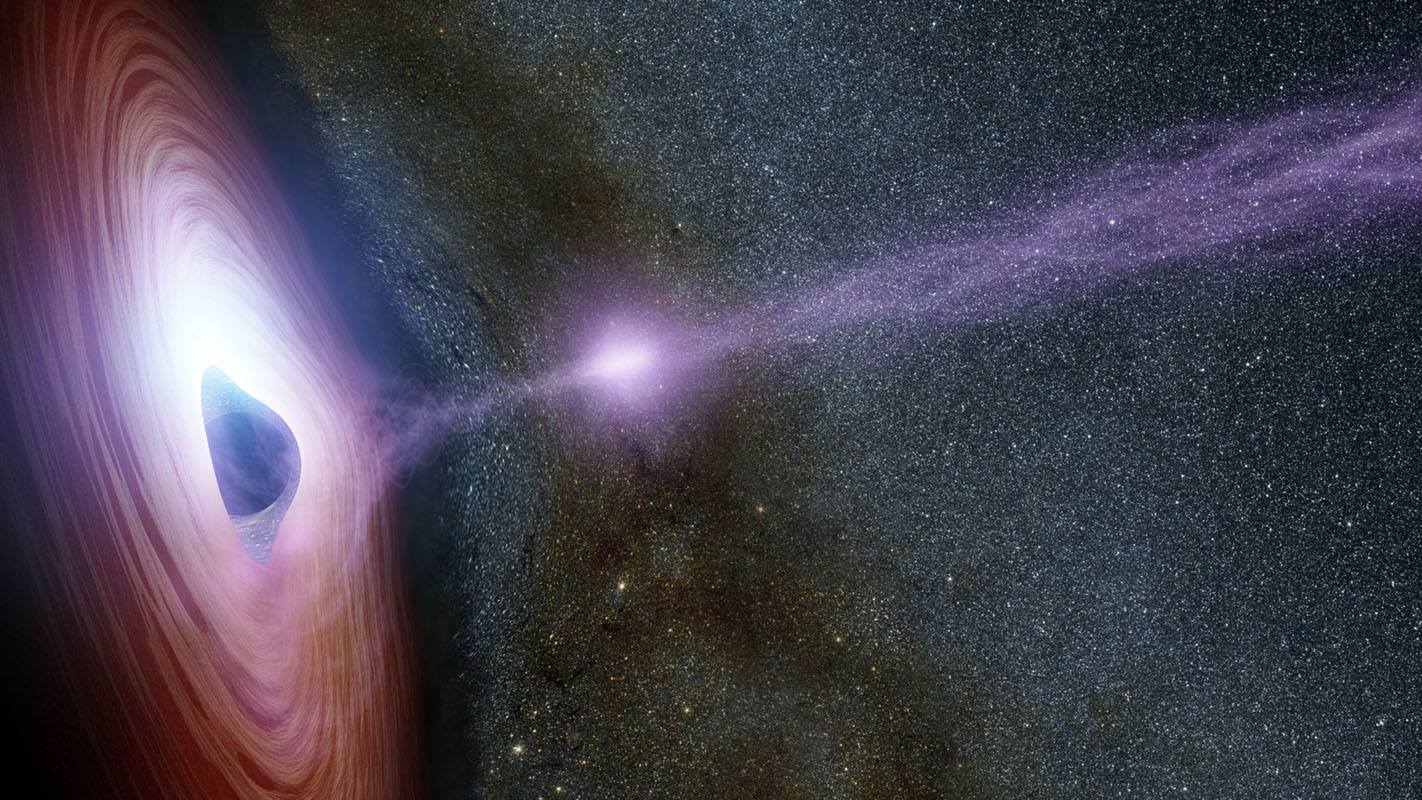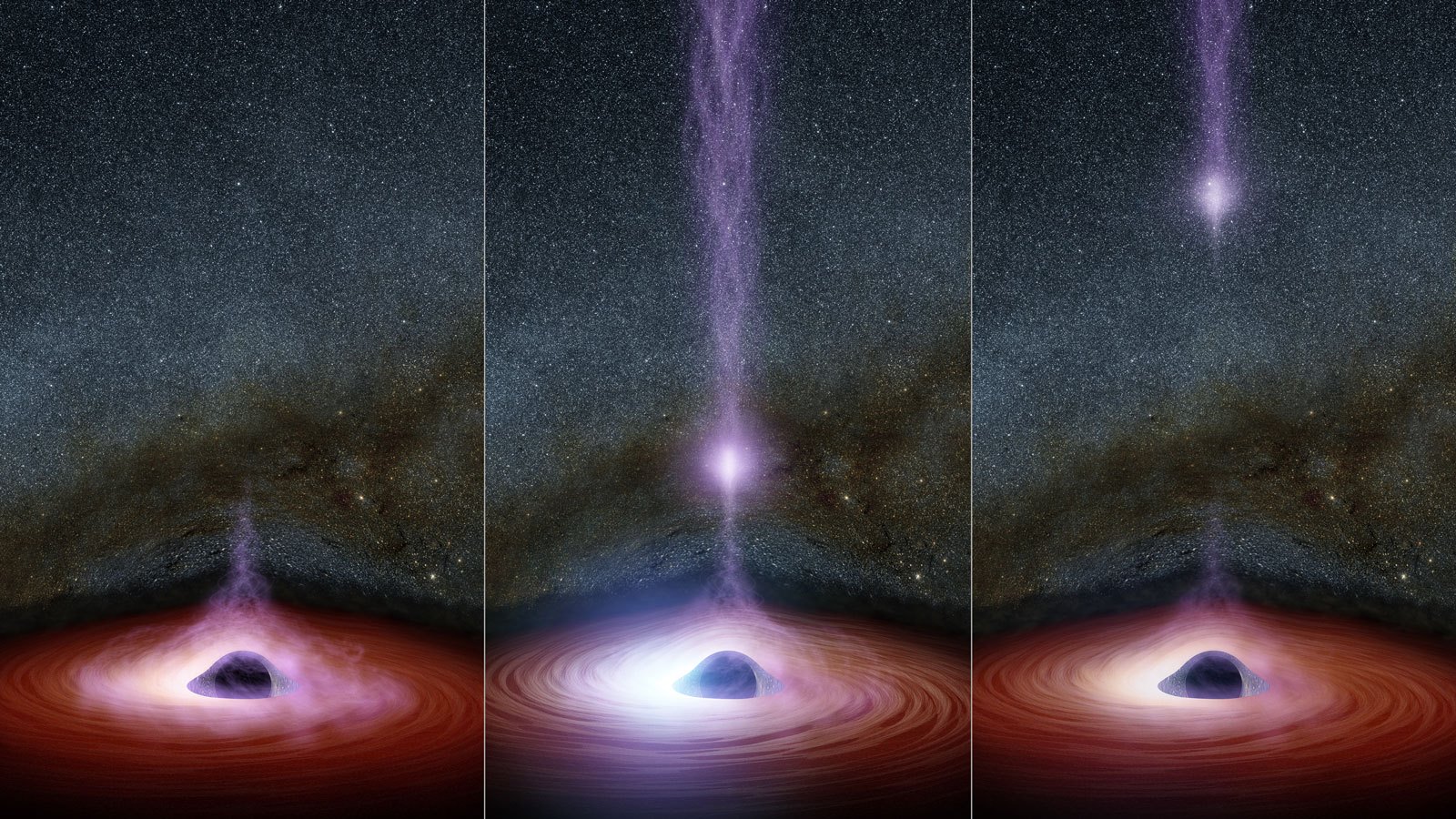 BLACK HOLE HAS MAJOR FLARE
BLACK HOLE HAS MAJOR FLAREJet Propulsion Lab | OCTOBER 27, 2015
"The baffling and strange behaviors of black holes have become somewhat less mysterious recently, with new observations from NASA's Explorer missions Swift and the Nuclear Spectroscopic Telescope Array, or NuSTAR.
The two space telescopes caught a supermassive black hole in the midst of a giant eruption of X-ray light, helping astronomers address an ongoing puzzle:
How do super massive black holes flare?
The results suggest that supermassive black holes send out beams of X-rays when their surrounding coronas
-- which are sources of extremely energetic particles -- shoot, or launch, away from the black holes.
Supermassive black holes don't give off any light themselves,
but they are often encircled by disks of hot, glowing material.
The gravity of a black hole pulls swirling gas into it,
heating this material and causing it to shine with different types of light.
Another source of radiation near a black hole is the corona.
Coronas are made up of highly energetic particles that generate X-ray light,
but details about their appearance, and how they form, are unclear.
"Something very strange happened in 2007,
when Mrk 335 faded by a factor of 30.
 What we have found is that it continues to erupt in flares,
What we have found is that it continues to erupt in flares, but has not reached the brightness levels and stability seen before,"
said Luigi Gallo, the principal investigator for the project at Saint Mary's University.
Another co-author, Dirk Grupe of Morehead State University in Kentucky,
has been using Swift to regularly monitor the black hole since 2007.
After careful scrutiny of the data,
the astronomers realized they were seeing the ejection,
and eventual collapse, of the black hole's corona.